Opening a restaurant is a huge challenge. Among the hundreds of decisions you’ll make, one of the most critical is choosing the right restaurant kitchen equipment. It’s not just about filling the kitchen with shiny appliances; it’s about investing in tools that shape the efficiency, safety, and quality of every dish you serve. In this article, we’ll break down 11 essential equipment of the restaurant kitchen that owners cannot miss.
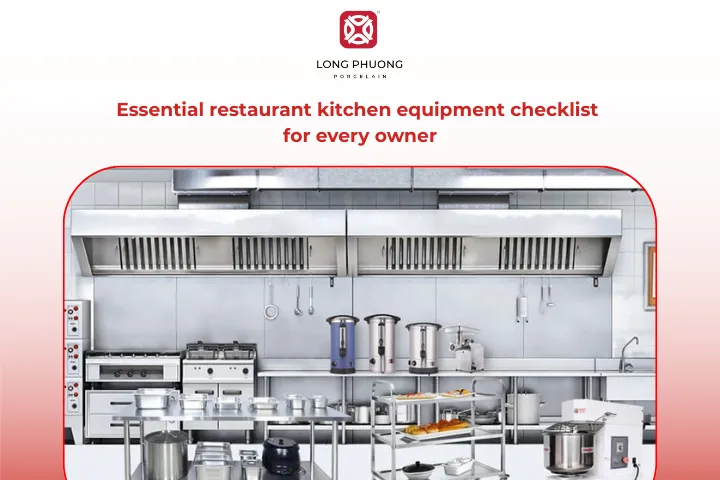
1. The role of restaurant kitchen equipment
Restaurant kitchen equipment includes cooking tools, food storage units, prep equipment, dining utensils, and cleaning supplies. These items play an essential role in every stage of food preparation and service. To create delicious dishes and impressive menus that attract customers, your kitchen needs to be equipped with high-quality, professional restaurant equipment.
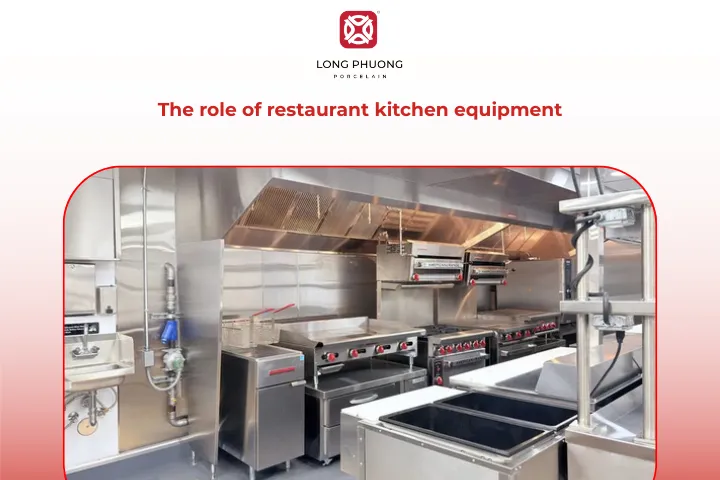
2. List of core restaurant kitchen equipment for running a restaurant
2.1. Industrial cookers: essential restaurant kitchen cooking equipment
Industrial cookers are the heart of any kitchen. From gas ranges and convection ovens to fryers and combi-ovens, these machines handle the various cooking tasks that define your menu. A well-chosen cooker ensures even heat distribution, faster cooking times, and consistent flavor. When selecting one, consider your cuisine type, such as grills for steakhouses, deck ovens for pizzerias, or steamers for healthier menus.
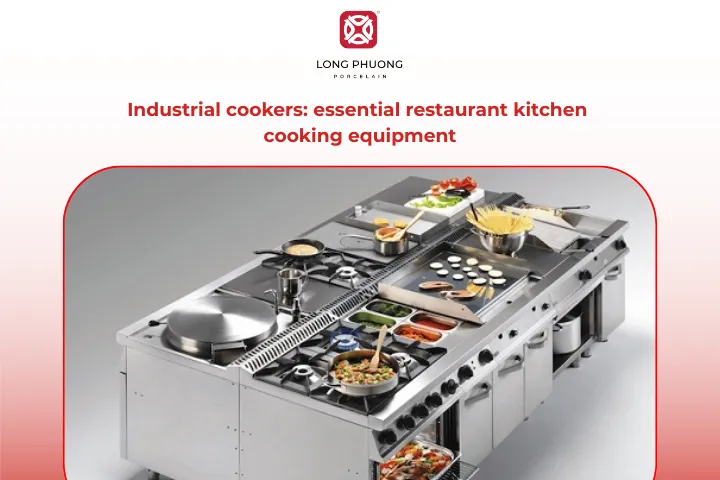
2.2. Cookware: indispensable equipment of the restaurant kitchen
Cookware includes pots, pans, and fryers that allow chefs to prepare a wide range of dishes, from soups, grilled meats, to fried foods. High-quality stainless steel or cast iron cookware ensures even heat distribution, energy efficiency, and long-term durability. These tools may seem simple, but they are essential for maintaining consistency, flavor, and speed in any professional kitchen.
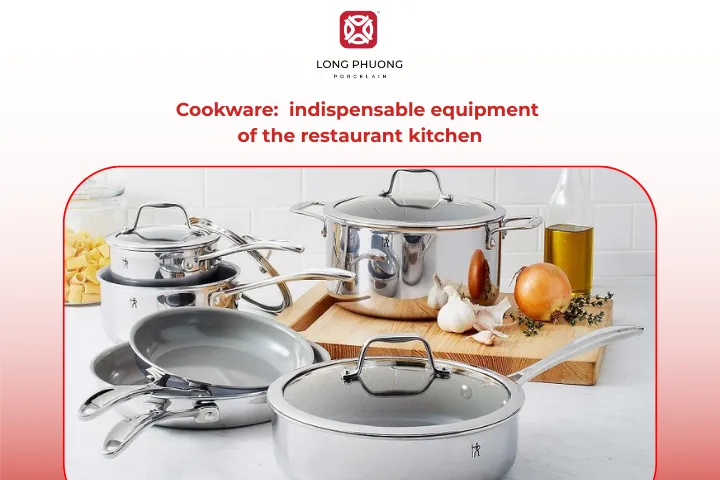
2.3. Refrigeration equipment for safe restaurant kitchen operations
Refrigeration equipment includes reach-in coolers, walk-in freezers, prep-table refrigerators, and under-counter units. Choosing proper refrigeration equipment keeps ingredients fresh and prevents spoilage. Look for energy-efficient compressors, adjustable shelving, and precise temperature controls. Separating storage for meat, seafood, and produce can also help maintain hygiene standards.

2.4. Odor extraction system for modern restaurant kitchens
Odor extraction systems keep the kitchen air clean and safe. These systems remove smoke, grease, and heat, ensuring that staff work comfortably and diners aren’t overwhelmed by strong smells. Proper airflow is not only required by health codes but also critical for maintaining a pleasant dining environment. Modern systems even come with grease filters and fire suppression technology for added safety.
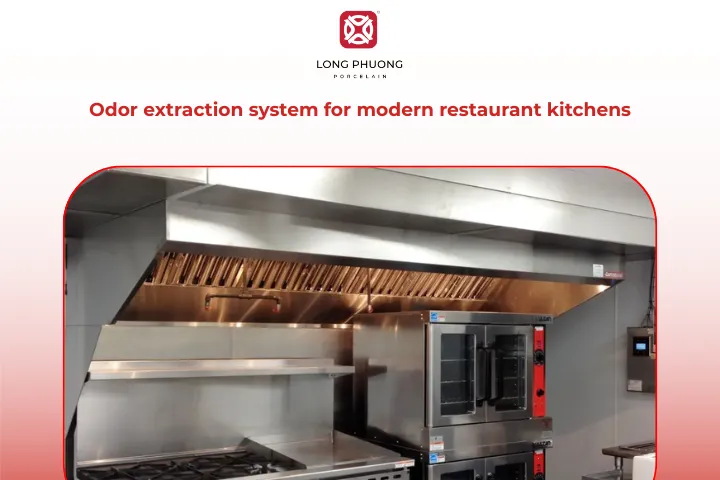
2.5. Food processing equipment every restaurant kitchen needs
Food preparation equipment includes tools that help clean and process ingredients through chopping, slicing, grinding, and blending. These tools are essential for maintaining both efficiency and hygiene in the kitchen. Common prep equipment includes prep tables, vegetable slicers, meat slicers, meat grinders, bone saw machines, juicers, and vegetable blenders.
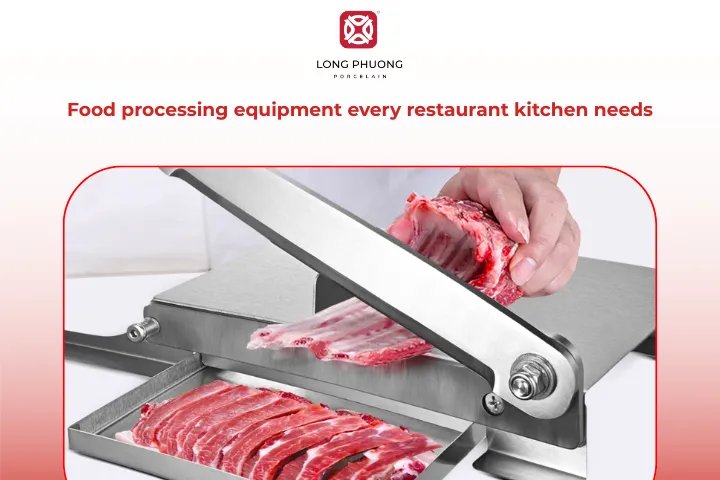
2.6. Beverage dispensing counter for efficient restaurant kitchens
Some restaurants also serve drinks to customers, so a well-equipped beverage dispensing counter is essential. It should include modern, convenient tools and machines for preparing a variety of beverages. A standard beverage station typically includes items such as a coffee machine, blender, bar tools, glass racks, storage shelves, sink, and ice bin.
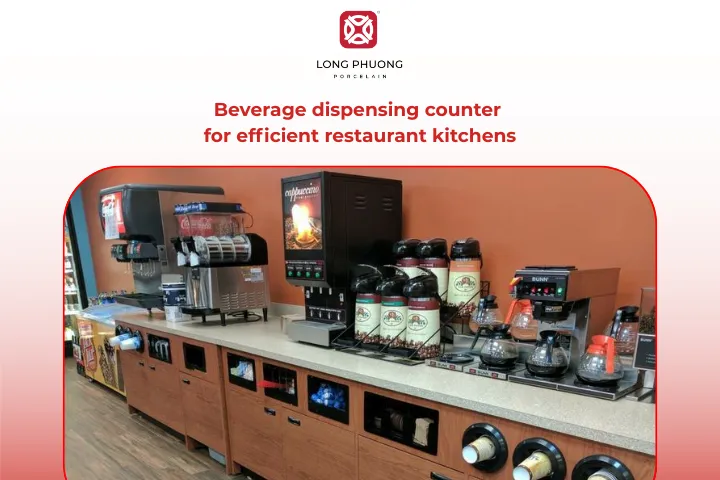
2.7. Cooking utensils: must-have restaurant kitchen cooking equipment
Behind every great chef is a set of reliable utensils. From ladles and spatulas to whisks and tongs, utensils are the hands of the kitchen. Investing in high-quality stainless steel tools prevents breakage and ensures precision. Non-slip handles, heat resistance, and easy cleaning are must-haves. Remember that fine utensils improve speed, safety, and presentation.

2.8 Plates, bowls, and cups in restaurant kitchen setups
Presentation matters just as much as preparation. Durable, heat-retaining plates and bowls keep food looking and tasting fresh when it reaches the customer. Choose materials like porcelain, ceramic, or melamine based on your restaurant’s concept. Coordinating designs with your brand’s theme adds visual appeal and professionalism to every dish you serve.
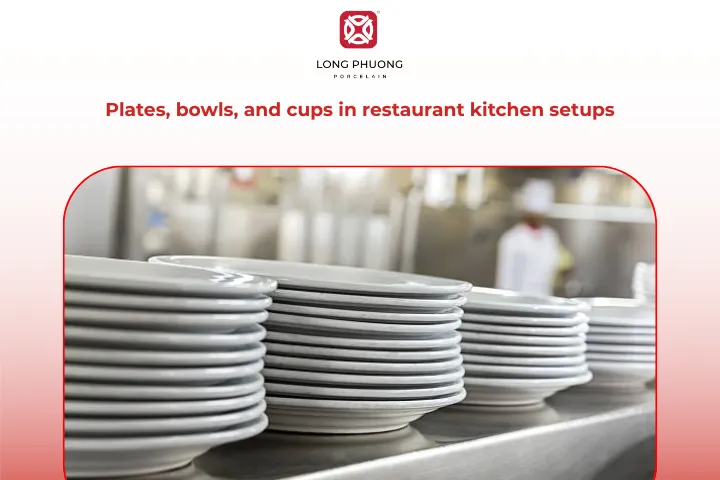
See more: Long Phuong Porcelain – A trusted porcelain tableware manufacturer
2.9 Sanitation equipment to keep your restaurant kitchen clean
Sanitation equipment includes dishwashers, three-compartment sinks, waste bins, and cleaning stations. Investing in high-temperature or chemical sanitizing dishwashers ensures compliance with health standards. Don’t forget mop sinks, soap dispensers, and proper floor drains. They’re essential for maintaining hygiene and preventing cross-contamination.
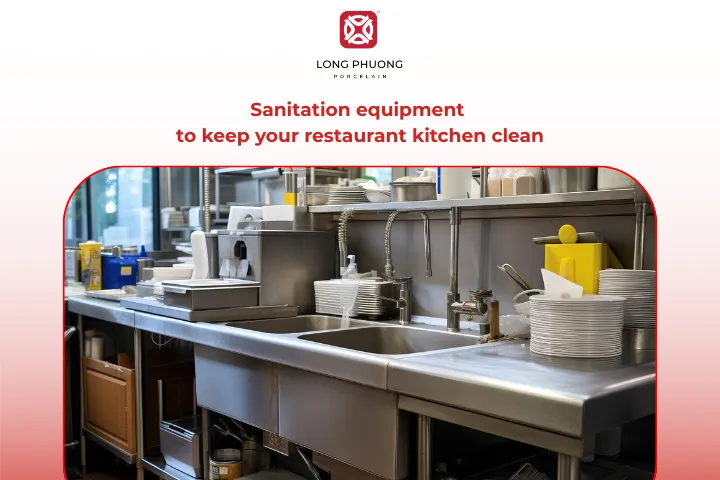
2.10. Kitchen safety equipment for a compliant restaurant kitchen
A safe kitchen protects both your staff and your investment. Fire extinguishers, first-aid kits, cut-resistant gloves, and anti-slip mats are small but critical items. Safety should be built into every level of your restaurant’s kitchen equipment planning. For instance, ovens should have cool-touch handles, and electrical outlets should be properly grounded. Regular safety checks help avoid costly accidents and downtime.
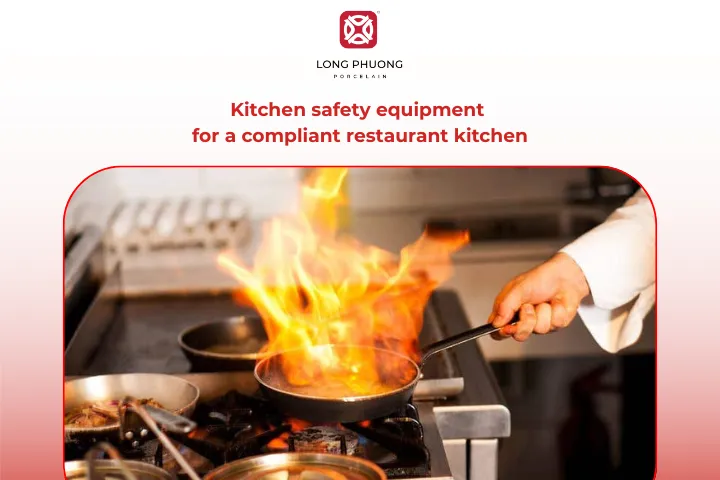
2.11. Storage racks and containers to keep your restaurant kitchen organized
The kitchen area holds a wide range of tools and utensils, so keeping it tidy is essential. To create a more efficient and professional kitchen, restaurants should invest in proper storage solutions such as racks for pots, pans, knives, cutting boards, spices, and dry goods, as well as food containers that keep ingredients clean and easy to store.
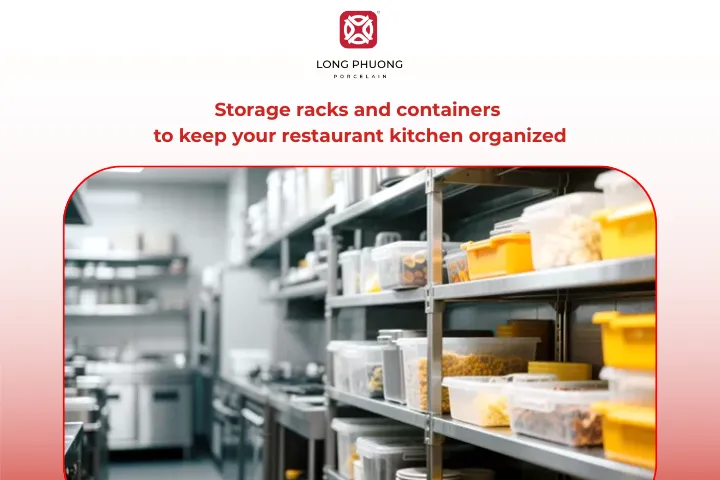
3. How to choose the right restaurant kitchen equipment
3.1. Assess your menu and volume
Start by looking at what’s on your menu and how many customers you serve daily. A bakery needs different tools than a steakhouse, and a small café doesn’t need the same heavy-duty ovens as a high-volume restaurant. Choose restaurant kitchen equipment that fits your cuisine and production scale.
3.2. Consider your kitchen layout
A well-organized kitchen saves time and reduces accidents. Map out where each piece of restaurant kitchen equipment should go to ensure smooth movement between prep, cooking, and serving areas. Remember, efficiency often depends on layout, not just machinery.
3.3. Energy use and running costs
Energy-efficient appliances reduce your utility bills and help the environment. Look for Energy Star-certified restaurant kitchen equipment, so it often pays for itself over time. Focusing on energy efficiency also shows that your restaurant values sustainability, which customers increasingly appreciate.
3.4. Durability and maintenance
Restaurant kitchens are tough environments, so durability matters. Invest in restaurant equipment & kitchen supplies built from stainless steel or heavy-duty materials. Check that spare parts are available and maintenance is simple. Because downtime in the kitchen means lost revenue.
3.5. Brand, warranty, and service network
Finally, stick to reputable brands that offer solid warranties and reliable after-sales support. A strong service network ensures quick repairs and less disruption to your business operations.

4. Must-have restaurant kitchen equipment for different kitchen types
4.1. Essential restaurant kitchen equipment for a quick service restaurant
Speed and consistency are everything in a quick-service restaurant. You’ll need high-capacity fryers, griddles, and sandwich prep tables to handle large orders fast. Refrigerated display units, beverage dispensers, and microwaves also help maintain quick turnaround times. Space-saving and energy-efficient designs are ideal for these fast-paced kitchens.
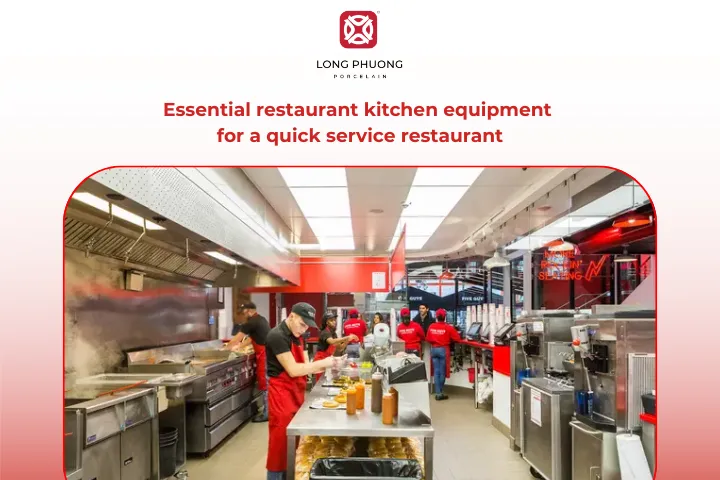
4.2. Indispensable restaurant kitchen equipment for a full-service restaurant
Full-service kitchens require a broader range of cooking, storage, and plating equipment. Industrial cookers, ovens, grills, and sauté stations form the heart of daily operations. You’ll also need dishwashing systems, refrigeration units, and ample prep counters to maintain efficiency during peak hours. The focus here is on balance among speed, quality, and presentation.
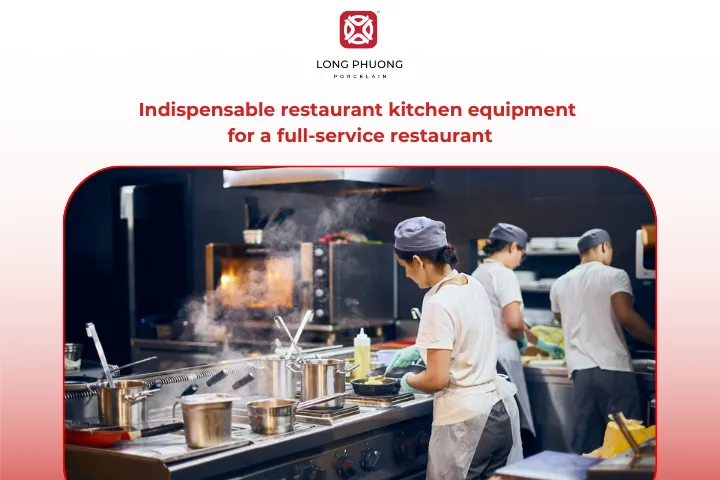
4.3. Necessary restaurant kitchen equipment for bakery and pastry kitchen
A bakery or pastry kitchen thrives on precision and temperature control. Key items include mixers, proofers, convection ovens, and cooling racks. Stainless steel prep tables and ingredient bins keep everything organized. Accurate measuring tools and pastry equipment like rolling pins, piping bags, and molds are also must-haves for creating consistent results.
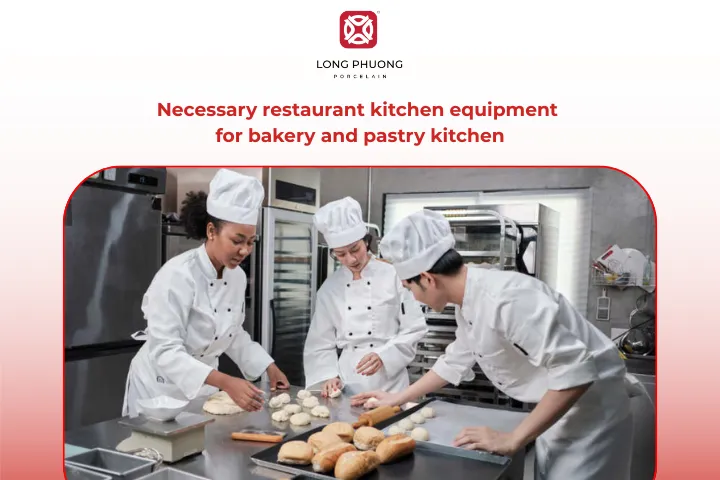
4.4. Crucial restaurant kitchen equipment for catering and commissary kitchens
These kitchens handle bulk production, so durability and capacity come first. Commercial ovens, steam kettles, food warmers, and mobile storage units are essential for large-scale prep and transport. You’ll also need packaging stations and cold storage areas to keep ingredients and finished dishes safe before delivery.

5. Long Phuong Porcelain – A reputable supplier of restaurant tableware and dining utensils
Long Phuong Porcelain is a trusted supplier known for its high-grade porcelain products that blend durability with timeless design. From tableware to dining utensils, each piece is crafted to meet the demands of different dining environments. For businesses seeking a reliable, long-term partner in restaurant equipment & kitchen supplies, Long Phuong Porcelain stands out as a brand that delivers both beauty and performance.
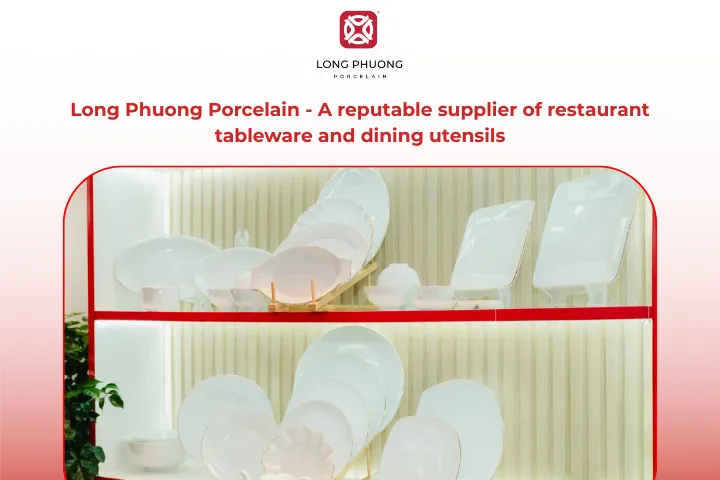
6. FAQs
6.1. What is the most important restaurant kitchen equipment?
It depends on your restaurant’s concept, but essential equipment usually includes refrigerators, ovens, stoves, prep tables, and dishwashers. These form the backbone of any kitchen, ensuring smooth operations and food safety.
6.2. How much does it cost to equip a restaurant kitchen?
The cost can range from $40,000 to over $150,000, depending on the restaurant’s size and quality of equipment. Fine-dining or large kitchens often require high-end appliances, while small cafes or quick-service outlets can start with lower investments.
6.3. Should I buy new or used restaurant kitchen equipment?
New restaurant equipment & kitchen supplies offer warranties, better energy efficiency, and longer lifespan, while used equipment can significantly reduce initial costs. A smart approach is to combine both: buy new restaurant kitchen equipment for critical appliances like refrigerators and used restaurant kitchen equipment for non-essential tools like shelving or prep tables.
6.4. How do I choose the right restaurant kitchen equipment for my menu?
Your menu determines your restaurant equipment & kitchen supplies needs. Start by analyzing your most frequently cooked items, portion sizes, and cooking techniques. Then, select restaurant kitchen equipment that supports those processes efficiently without overloading your space or budget. Consulting a kitchen planner can also help you optimize your layout and workflow.
6.5. How can I save money on restaurant kitchen equipment?
You can save by buying in bulk, comparing suppliers, and choosing energy-efficient models to cut long-term costs. Leasing or renting restaurant kitchen equipment is also a good option for startups. Additionally, plan your purchases around promotions or clearance sales from reputable suppliers.
6.6. How do I maintain my restaurant kitchen equipment?
Regular maintenance is key to extending lifespan and preventing costly breakdowns. Clean restaurant kitchen equipment daily, schedule professional servicing every few months, and train staff to handle tools correctly. Always follow the manufacturer’s manual for cleaning and operating guidelines.
7. Conclusion
Building a professional restaurant kitchen is about more than just filling it with appliances. It requires careful planning and smart investment. Choosing the right restaurant kitchen equipment helps you streamline operations, maintain food safety, and enhance overall productivity.
Related articles
CEO of Long Phuong Group Joint Stock Company, with more than 20 years of exploration and research to obtain the best formulas and professional experience, Long Phuong Porcelain has produced more than 400 designs of all kinds of household porcelain, Significant contributions to Vietnam's ceramic industry.
 Vietnam
Vietnam
